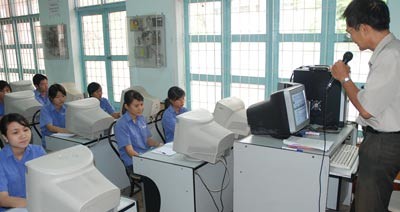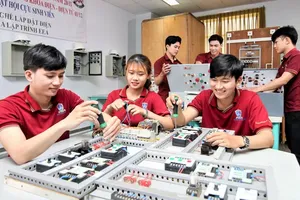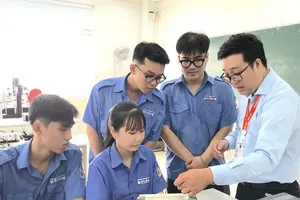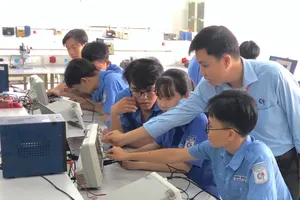Despite the huge demand for skilled workers at industrial parks (IPs) and export processing zones (EPZs), more than 500,000 junior school-leavers, who didn’t pass university entrance exams, have opted to start working as unskilled laborers in small factories and businesses rather take vocational courses.

To address this shortage of skilled laborers, the Ministry of Education and Training has set a target to enroll 30 per cent of junior school-leavers in vocational training from 2010 to 2020.
Since vocational education was introduced into schools in Vietnam in the 1980s, it has proved unpopular with many students, leading many schools to drop it from the curriculum.
Since 1992, the competition between schools to produce more graduates has also led to a reduction in school vocational courses. In 2006, grades 9, 10, 11 and 12 had three vocational classes per month, while currently classes have been reduced to one per month.
Lam An, head of a Junior Ward of the Ho Chi Minh City Department of Education and Training, said vocational training helps students to learn about the employment market and plan a suitable career.
Tran Phuoc Duc, headmaster of the Ngo Quyen high school, said there is a shortage of qualified vocational teachers and up-to-date career counseling at schools.
Most students prefer to continue study to earn an engineer’s salary rather than go down the less-well-paid vocational path – causing an oversupply of engineers and a shortage of skilled workers.
Nguyen Huu Loc in ward 7 in district 8 said he felt sad when he parted with most of his classmates who were entering high schools while he pursued vocational studies at Nam Sai Gon School. He said the sad feeling soon passed when he realized he would have guaranteed work in the future. He said his training cost was also subsidized by the school and government.
Trieu Tuan, head of the district 8’s Education and Training Bureau, said more information sessions about the benefits of vocational training should be provided to schools.
He said students in district 8 would benefit from a career fund set up by the district to support disadvantaged students train for skilled jobs in the neighboring Phu Dinh harbor and Binh Dien wholesale market, which both require skilled workers.
District 6, Tan Phu and Phu Nhuan also provides financial assistance to poor students if they follow vocational study.
District authorities claimed more students would follow vocational training if they could see more career opportunities and there were no tuition fees. Most districts steered students from low-income families and with poor school grades into vocational training.
Education experts said vocational training needs to be promoted to students and parents more than it is. Currently it is introduced only once during the academic year.
The Education and Training Bureau’s decision to invite representatives from vocational schools to talk to parents about subjects and admission criteria in March, April and June hopes to increase the application rate for vocational training to 30.62 per cent of junior graduates.
IPs and EPZs in Dong Nai, Binh Duong and Binh Phuoc desperately need vocational trainees but half of the enrollees in vocational courses are quitting early saying the courses are not good enough.
























